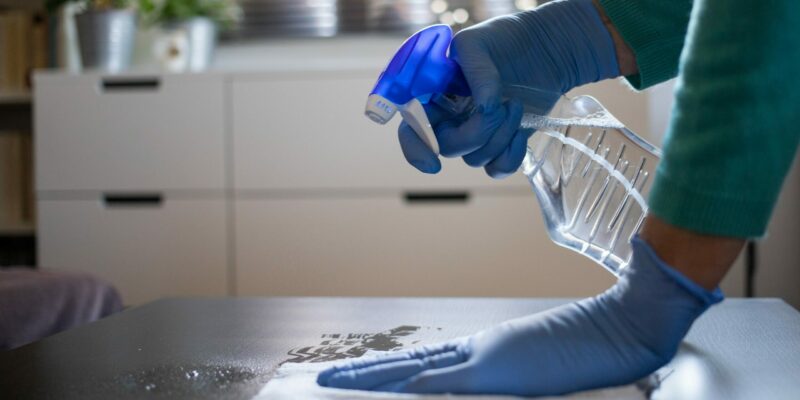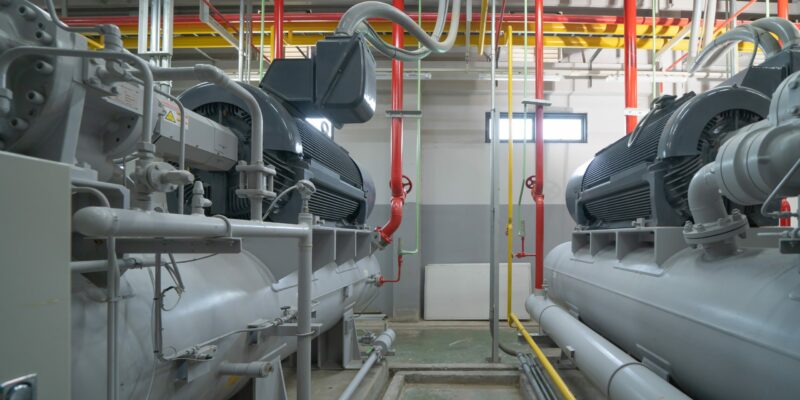Key Points/Overview
Ammonia is a naturally occurring gas that serves as a chemical building block for a range of commercial and household products, including fertilizers and cleaning supplies.
Additional uses include as a refrigerant, stabilizer, neutralizer, and purifier — particularly in food transport and water treatment applications. It can also be used in the manufacture of plastics, explosives, fabrics, dyes, and pharmaceuticals.
Proper ventilation is important when using cleaning products that contain ammonia. Ammonia exposure can irritate the skin, eyes and lungs. To prevent the release of toxic fumes, ammonia should not be mixed with other chemicals (especially chlorine bleach).
Uses & Benefits

Ammonia in Fertilizer
Ammonia is a basic building block for ammonium nitrate fertilizer, which releases nitrogen, an essential nutrient for growing plants, including farm crops and lawns. About 90 percent of ammonia produced worldwide is used in fertilizer, to help sustain food production for billions of people around the world. The production of food crops naturally depletes soil nutrient supplies. In order to maintain healthy crops, farmers rely on fertilizer to keep their soils productive. Fertilizers also can also help increase levels of essential nutrients like zinc, selenium and boron in food crops.

Ammonia in Household Cleaning Products
Ammonium hydroxide – commonly known as household ammonia – is an ingredient in many household cleaning products used to clean a variety of surfaces including tubs, sinks, toilets, countertops and tiles. Ammonia also is effective at breaking down household grime or stains from animal fats or vegetable oils, such as cooking grease and wine stains. Because ammonia evaporates quickly, it is commonly used in glass cleaning solutions to help avoid streaking.

Ammonia in Industrial/Manufacturing Uses
When used as a refrigerant gas and in air-conditioning equipment, ammonia can absorb substantial amounts of heat from its surroundings.
Ammonia can be used to purify water supplies and as a building block in the manufacture of many products including plastics, explosives, fabrics, pesticides and dyes.
Ammonia also is used in the waste and wastewater treatment, cold storage, rubber, pulp and paper and food and beverage industries as a stabilizer, neutralizer and a source of nitrogen. It also is used in the manufacture of pharmaceuticals.

Safety Information
When using cleaning products containing ammonia, follow all instructions on the product label, make sure the area is well ventilated (open windows and doors) and wear proper clothing and eye protection. Ammonia exposure can irritate skin, eyes and lungs. Do not mix ammonia with chlorine bleach, as this produces toxic gases called chloramines. Exposure to chloramine gases can cause coughing, shortness of breath, chest pain, nausea, irritation to the throat, nose and eyes or pneumonia and fluid in the lungs.
Swallowing a cleaning product that contains ammonia can burn the mouth, throat, and stomach and cause severe abdominal pain. If a cleaning product containing ammonia is accidentally ingested, read the product label for safety instructions, or call the National Poison Control Center at 1-800-222-1222, and be sure to have the label from the cleaning product in hand.
Medical tests can detect ammonia in blood or urine. But because ammonia occurs naturally in the environment, people are regularly exposed to low levels of ammonia in air, soil and water, so these test results are not considered effective biomarkers of exposure. The Agency for Toxic Substances and Disease Registry (ATSDR) states that “no health effects have been found in humans exposed to typical environmental concentrations of ammonia.


